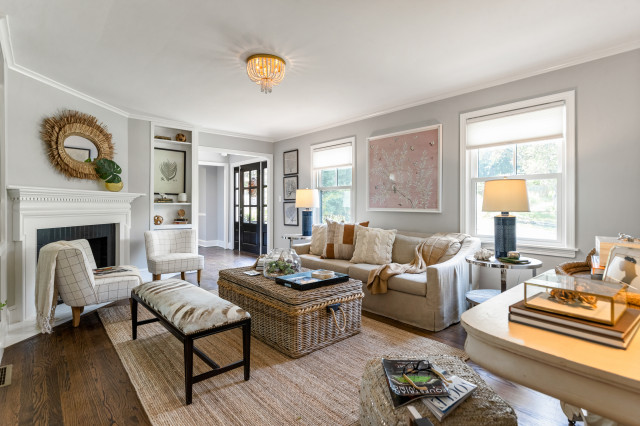Creating Ambiance: Choosing the Right Fixtures for Stacked Areas
Creating the perfect ambiance in your living spaces is all about selecting the right lighting fixtures that not only illuminate your room but also add to the aesthetics and functionality. Lighting is an element often overlooked, yet it plays a crucial role in how we perceive and interact with our environment. In spaces where multiple activities occur, such as living rooms, the need for versatile lighting solutions becomes even more paramount.
As you navigate the complexities of lighting your stacked areas, consider the various layers of light needed for different activities and moods. From task lighting for "doing" to ambient lighting for "feeling," each layer serves a unique purpose that contributes to the room's overall ambiance. This article explores practical strategies for choosing and arranging fixtures, drawing from expert insights and popular design trends.
Understanding Layered Lighting
Layered lighting is a concept that involves using multiple light sources to create a balanced and well-lit space. David Warfel, a lighting design specialist, suggests employing five layers of light to transform any living area into a functional and inviting space. These include task lighting, ambient lighting, accent lighting, decorative lighting, and natural lighting.
Task lighting or light for "doing" is essential in areas where activities such as reading, studying, or playing games occur. Table lamps and floor lamps are excellent choices for these zones, providing focused illumination that can be adjusted as needed.
Ambient lighting, or light for "knowing," provides overall illumination that allows for easy movement and interaction within a space. Wall sconces and ceiling fixtures often serve this purpose, ensuring that the room is evenly lit without shadows.

Accent and Decorative Lighting
Accent lighting, often referred to as "light for telling your story," is used to highlight specific features or objects within a room. This could be a spotlight on a treasured painting or concealed lighting that brings attention to architectural details.
Decorative lighting fixtures also play a significant role in defining the aesthetic of a room. Whether it's a stunning Tiffany lamp or a series of elegant globe lights, these pieces not only provide light but also add to the decor.
A popular choice highlighted in design is the use of LED globe lights. These fixtures bring both style and function to a room, offering a warm, inviting glow perfect for creating a cozy atmosphere. Their versatility in length and number of globes makes them suitable for diverse spaces. 
Incorporating Natural Light
Natural light is perhaps the most beneficial form of lighting, both for our health and for the ambiance of a room. Large windows and strategic placement of mirrors can maximize the influx of natural light during the day, reducing the need for artificial lighting.
However, as the sun sets, it's essential to recreate the warmth and comfort that natural light offers. Incorporating dimmers and adjustable lamps can help simulate the changing quality of daylight, making spaces feel more dynamic and inviting during evening hours.
Careful planning in the placement and control of both natural and artificial lighting ensures a harmonious environment that aligns with the natural rhythm of the day.
Practical Application in Living Rooms
Living rooms are versatile spaces that require thoughtful lighting design. Consider employing a mix of the lighting types discussed to accommodate a range of activities. During the day, leverage natural light, while in the evenings, create a cozy atmosphere with dimmable overhead lights and accent lamps.
For entertainment zones, ensure that lighting is sufficient for both watching movies and playing games. This might mean integrating task lights like adjustable floor lamps with ambient overhead lighting to provide all-encompassing illumination.
Consulting with a lighting specialist can also be beneficial, as they can provide insights specific to your space, suggest products, and develop a comprehensive lighting plan that meets your needs.
Conclusion
Choosing the right lighting fixtures for stacked areas is a strategic process that enhances both functionality and comfort. By understanding and implementing layered lighting practices, you can transform your space into a vibrant yet relaxing environment.
Consider the balance of task, ambient, and accent lighting to cater to the diverse activities in your home. Each light source should work in harmony to provide a seamless visual transition throughout the day.
Ultimately, the best lighting solutions are those that can be tailored to your personal style while effectively illuminating your space. With thoughtful selection and arrangement, your living areas can achieve the perfect ambiance that reflects your lifestyle and needs.